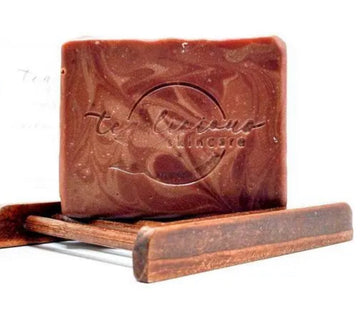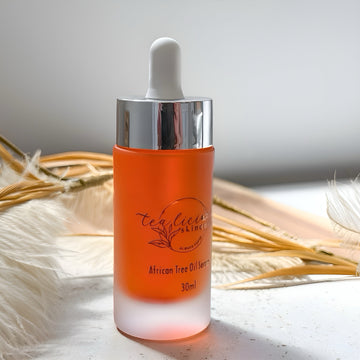It’s easy to be confused by buzzwords like hydration and nourishment. They’re thrown around in product descriptions and beauty blogs, but what do they really mean? If you’ve ever wondered how to achieve that coveted glowing, healthy complexion, you’re not alone. I’ve been there, staring at shelves of natural skincare products, trying to figure out which ones will quench my skin’s thirst or feed its deeper needs. In this guide, I’ll share what I’ve learned about the difference between hydration and nourishment in skincare, dive into the natural ingredients that deliver each, and explain how they work to give you radiant, balanced skin. My goal is to make this educational, friendly, and empathetic—because I know how overwhelming skincare can feel!
What Hydration Really Means for My Skin
When I first started my skincare journey, I thought hydration was just about slathering on a thick cream and calling it a day. But here’s what I learned: hydration is all about water. It’s the process of delivering and locking water into your skin to keep it plump, soft, and resilient. Our skin’s outermost layer, the stratum corneum, acts like a protective shield, holding in moisture and keeping out irritants. But when that barrier gets compromised—whether from harsh winters, over-cleansing, or just aging—water escapes, leaving your skin dehydrated, flaky, and dull.
I used to think dehydration was only a problem for dry skin types, but I was wrong. Even oily skin has felt tight and lackluster after a long day. That’s because hydration isn’t about oil—it’s about water content. Hydrating ingredients, called humectants, are like tiny sponges that pull water from the air or deeper layers of your skin to the surface. These are game-changers for all skin types, including acne-prone or combination skin, because dehydrated skin can overproduce oil to compensate, leading to breakouts.
Why Hydration Matters
- It banishes dryness: Hydrated skin feels comfortable, not tight or flaky.
- It strengthens my skin barrier: Moisture keeps my skin’s shield intact, protecting it from irritants.
- It smooths fine lines: Plump skin makes those early wrinkles less noticeable (a win for my 60’s!).
- It gives me that glow: Hydrated skin reflects light, creating a radiant, dewy look I love.
Nourishment: Feeding My Skin’s Soul
If hydration is about quenching my skin’s thirst, nourishment is about feeding its soul. Nourishment delivers the essential nutrients, lipids, and antioxidants my skin needs to stay healthy, repair itself, and fight off environmental damage. Think of it like eating a balanced diet—your skin craves vitamins, fatty acids, and protective compounds to thrive.
I used to overlook nourishment, focusing only on moisture. But when I started incorporating nourishing ingredients, I noticed my skin felt softer, more balanced, and better equipped to handle stress (like pollution or UV rays). Nourishing ingredients, often emollients and occlusives, replenish the skin’s lipid barrier, lock in moisture, and provide the building blocks for long-term health. This is especially important for my dry patches or when my skin feels sensitive after a long day.
Why Nourishment is Needed:
- It repairs the skin barrier: Nourishing ingredients restore the lipids I lose from cleansing or cold weather.
- It fights aging: Antioxidants protect my skin from free radicals, keeping it youthful.
- It soothes sensitivity: Nutrient-rich ingredients calm redness and irritation.
- It keeps my skin supple: Nourished skin feels velvety and resilient, no matter the season.
Hydration vs. Nourishment: The Key Differences
Here’s the simplest way to think about it: hydration adds water to your skin, while nourishment adds nutrients and oils. Hydration is immediate—it’s about that instant plumpness and dewy glow. Nourishment, on the other hand, is a long-term investment in your skin’s health, repairing damage and building resilience. Both are essential, but they work in different ways:
- Hydration uses humectants to attract and retain water, addressing dryness and dehydration.
- Nourishment uses emollients, occlusives, and antioxidants to feed the skin, strengthen its barrier, and protect against aging.
Our skin needs both to look and feel its best. A hydrating serum might quench your skin’s thirst, but without nourishing oils or creams, it won’t stay soft or protected. Let’s dive into the natural ingredients I rely on for each, and how they work their magic.
Natural Hydrating Ingredients: My Go-To Water Magnets
When I started creating natural skincare, I was amazed by how many plant-based ingredients deliver hydration. Here are the ones I love, along with how they work to keep my skin plump and dewy:
1. Aloe Vera
- What it does: Aloe vera is a humectant packed with water, polysaccharides, and soothing compounds. It draws moisture into my skin while calming irritation.
- How it helps: aloe vera gel instantly hydrates and soothe redness, especially after sun exposure. It’s lightweight, making it perfect for my oily T-zone.
- Fun fact: Studies show aloe vera improves skin hydration by up to 20% when applied regularly.
2. Hyaluronic Acid (Plant-Derived)
- What it does: Hyaluronic acid is a superstar humectant that holds up to 1,000 times its weight in water. Many natural brands source it from fermented plants.
- How it helps: I apply a hyaluronic acid serum morning and night for a plump, bouncy complexion. It’s a must for my fine lines, as it fills them out temporarily.
- **Pro tip**: Use it on damp skin to maximize its water-grabbing power.
3. Glycerin
- What it does: Glycerin, often derived from vegetable oils, is a gentle humectant that pulls moisture from the air into my skin.
- How it helps: Glycerin hydrates without feeling heavy. It’s great for combination skin, keeping dryness at bay without clogging pores.
4. Cucumber Extract
- What it does: Cucumber extract is rich in water and polysaccharides, delivering lightweight hydration and a cooling effect.
- How it helps: Cucumber-infused mists or masks hydrates when skin feels parched or overheated. It’s like a refreshing drink for my face!
- Bonus: Its anti-inflammatory properties calm puffiness, making it my go-to for tired mornings.
Natural Nourishing Ingredients: Our Skin’s Nutrient Boosters
Nourishing ingredients are like a hearty meal for your skin, delivering the fats, vitamins, and antioxidants it craves. Here are the natural powerhouses to watch for:
1. Shea Butter
- What it does: Shea butter is an emollient rich in fatty acids and vitamins A and E. It softens my skin and seals in moisture.
- How it helps: I use shea butter-based creams on my dry elbows and cheeks, especially in winter. It melts into my skin, leaving it velvety and protected.
- Why it’s special: Its anti-inflammatory properties soothing sensitive skin.
2. Jojoba Oil
- What it does: Jojoba oil mimics the skin’s natural sebum, balancing oil production while delivering fatty acids and vitamin E.
- How it helps: Just a few drops of jojoba oil is needed for nourishment without greasiness. It’s perfect for combination skin, keeping both dry and oily areas happy.
- Fun fact: It’s technically a wax, so it won’t clog pores.
3. Rosehip Oil
- What it does: Rosehip oil is packed with essential fatty acids (omega-3 and -6) and antioxidants like vitamin C, which repair and brighten the skin.
- How it helps: Rosehip oil to fades dark spots and nourish. It’s a staple for anti-aging, as it boosts collagen production.
4. Avocado Oil
- What it does: Avocado oil is rich in omega-9 fatty acids, vitamin E, and sterols, which nourish and repair the skin barrier.
- How it helps: Avocado oil-based products help rough patches It leaves skin feeling pampered and protected.
- Bonus: Its antioxidants fight free radicals, slowing down aging.
Hydration and Nourishment Work Together
Learning the difference between hydration and nourishment can transform your skincare game. Hydration keeps skin plump and dewy, while nourishment feeds it the nutrients it needs to stay healthy and resilient. By choosing natural skincare ingredients like aloe vera, hyaluronic acid, shea butter, and rosehip oil, you will find a balance that works for your skin.
If you’re feeling overwhelmed, start small. Add one hydrating and one nourishing product to your routine, and pay attention to how your skin responds. Your skin is unique, and with a little trial and error, you’ll discover what makes it glow. Let’s keep learning and glowing together!






